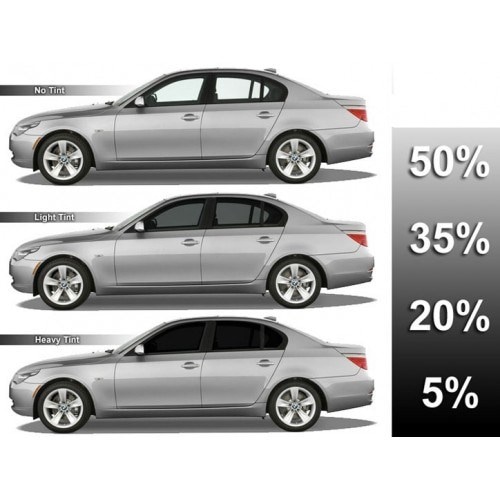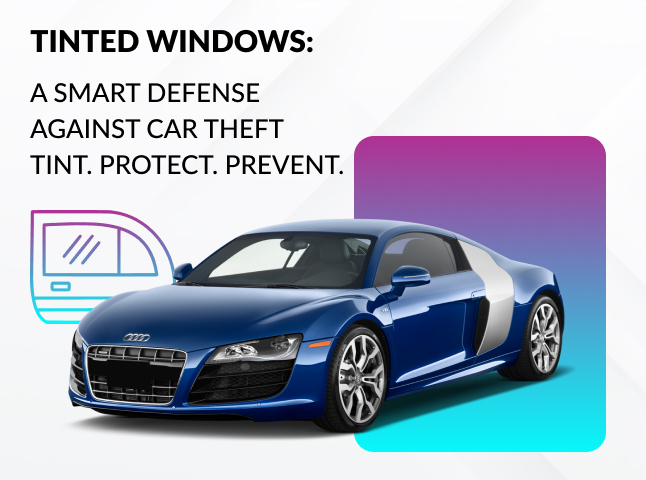Exploring the Various Types of Window Tinting for Your Auto's Aesthetic and Capability
The choice of window tinting for your vehicle prolongs past mere aesthetics; it plays an important role in enhancing performance and convenience. Numerous alternatives, such as dyed, metalized, ceramic, and carbon films, each offer unique advantages and downsides that provide to various needs and choices.
Dyed Window Films
Using dyed window films for auto applications offers an effective service for boosting both appearances and privacy. These films are composed of a layer of dyed polyester that supplies a darkened appearance to car windows, which can substantially improve the overall aesthetic appeal of a cars and truck. By soaking up solar energy, dyed films help minimize glare and heat, adding to a much more comfy interior environment.
Along with their visual benefits, dyed window movies additionally offer a practical objective by providing a degree of personal privacy for owners. The darker color limits visibility from the outdoors, allowing passengers and drivers to feel even more secluded and safe and secure. This facet is especially helpful for individuals that regularly bring valuables within their vehicles.

Metalized Window Tinting
Metalized window tinting offers an action up from dyed movies, combining aesthetic improvement with exceptional efficiency. This sort of tint includes a layer of metal particles, which not just enriches the aesthetic appeal of the automobile however also considerably boosts functionality. Window Tinting Palm Harbor. The reflective buildings of metalized films properly decrease glow, offering a much more comfy driving experience
Among the primary benefits of metalized window tinting is its capacity to obstruct harmful UV rays. By doing so, it secures both the car's interior and guests from sunlight damages, while additionally helping to control the internal temperature level of the vehicle. This can cause decreased dependence on cooling, thereby improving gas efficiency.
It's essential to note that metalized window tinting might conflict with GPS, satellite radio, and mobile phone signals due to its metallic web content. On the whole, this window tinting alternative offers as a well balanced option, giving both visual charm and useful advantages for vehicle owners.
Ceramic Window Tint
Ceramic window color has become a leading choice amongst cars and truck owners seeking innovative security and performance. This innovative color makes use of nano-ceramic modern technology, which gives premium warm rejection without compromising visibility. Unlike typical colors that may contain dyes or steels, ceramic films are non-metallic, making sure that electronic signals, such as GPS and cellphone connection, stay unaffected.
Among the main advantages of ceramic home window tint is its capacity to obstruct up to 99% of damaging UV rays, substantially lowering the danger of skin damages and indoor fading. Additionally, it supplies outstanding infrared heat denial, helping to keep a comfortable cabin temperature, thus reducing dependence on cooling and improving fuel performance.
Moreover, ceramic window tint is known for its durability and long life. It withstands gurgling, peeling, and discoloration, preserving its aesthetic allure in time. The clear look of ceramic movies boosts the vehicle's style while giving a sleek surface. Eventually, ceramic home window tint incorporates functionality with visual appeal, making it a favored choice for discerning vehicle owners that value both style and performance.
Carbon Window Films

Along with their thermal advantages, carbon window films provide a streamlined, contemporary visual that boosts the overall appearance of a lorry. They usually are available in numerous tones, enabling car owners to tailor their look while guaranteeing privacy and UV protection. Unlike dyed films, carbon films do not fade in time, preserving their shade and efficiency for many years.

Factory Tint vs. Aftermarket
When thinking about home window tinting for lorries, one of the key choices drivers face is in between factory tint and aftermarket alternatives. Factory color refers to the level of tint used by the supplier throughout the manufacturing process.
On the various other hand, aftermarket tinting offers a more comprehensive variety of choices, enabling personalization in both look and performance. Aftermarket movies are available in different shades and types, consisting of metallic, colored, and ceramic options, each supplying distinctive benefits such as enhanced warm being rejected or glare decrease. However, it's crucial to take into consideration regional regulations regarding tint darkness, as aftermarket installations can often go beyond legal limitations.
Additionally, appropriate installation of aftermarket tints is important click for source to stay clear of peeling or bubbling, which can endanger both visual appeals and performance. Eventually, the option in between manufacturing facility and aftermarket tinting depends on private choices, car needs, and conformity with policies.
Final Thought
In verdict, choosing the appropriate home window tinting enhances both the aesthetic allure and functionality of a lorry. Careful consideration of the numerous types of home window tints can considerably boost driving comfort and vehicle look.
The selection of home window tinting for your lorry expands past plain appearances; it plays an essential function in boosting functionality and convenience.Metalized window tinting offers a step up from dyed films, integrating visual enhancement with remarkable performance. On the whole, carbon window films provide a robust choice for those seeking an efficient, elegant, and durable window tinting option that meets both visual and useful demands.
When thinking about home window tinting for lorries, one of the essential options drivers face is between manufacturing facility color Continued and aftermarket alternatives. Careful consideration of the different kinds of home window colors can considerably enhance driving convenience and automobile appearance.